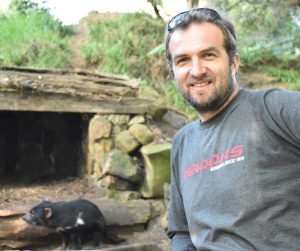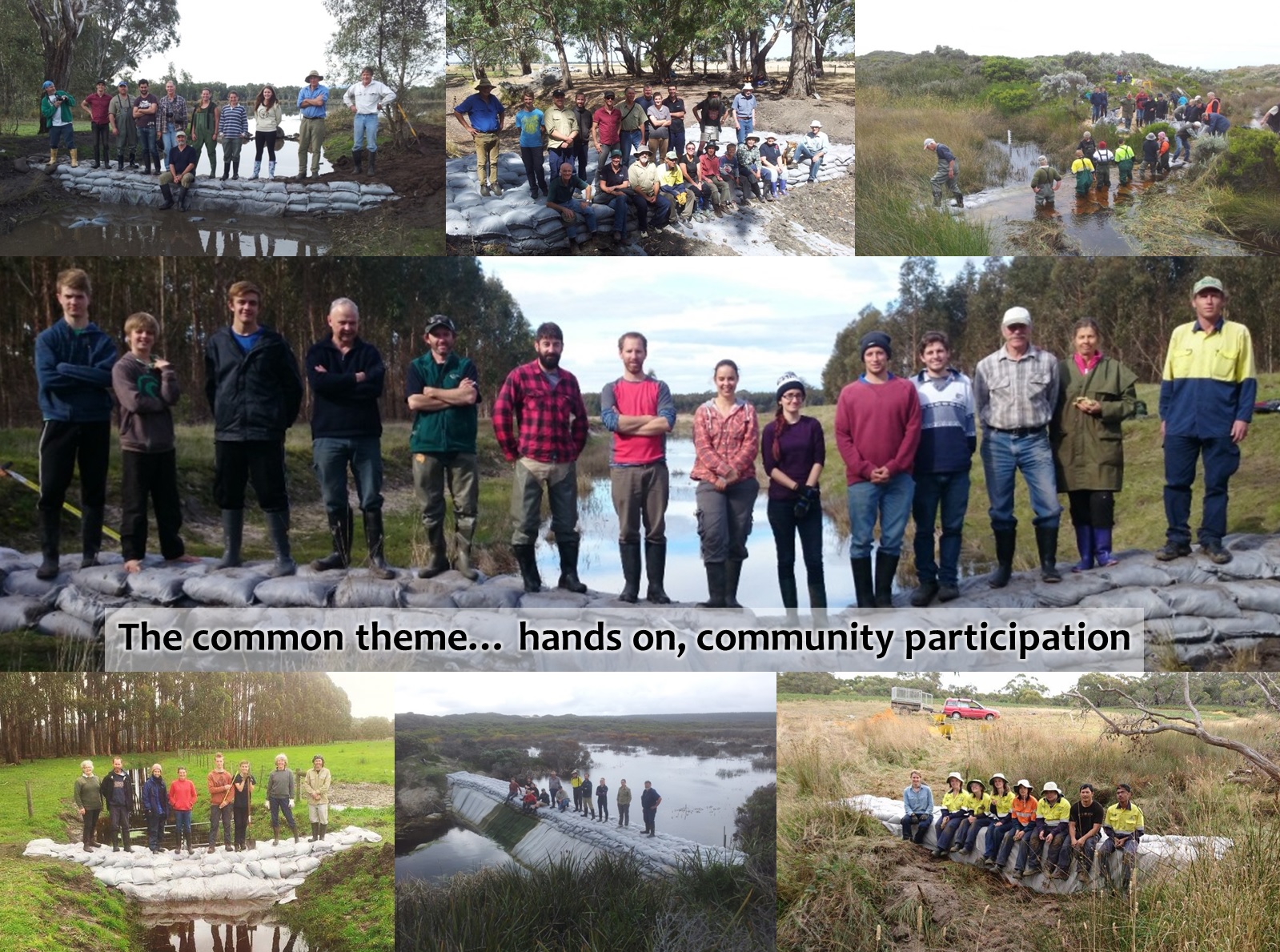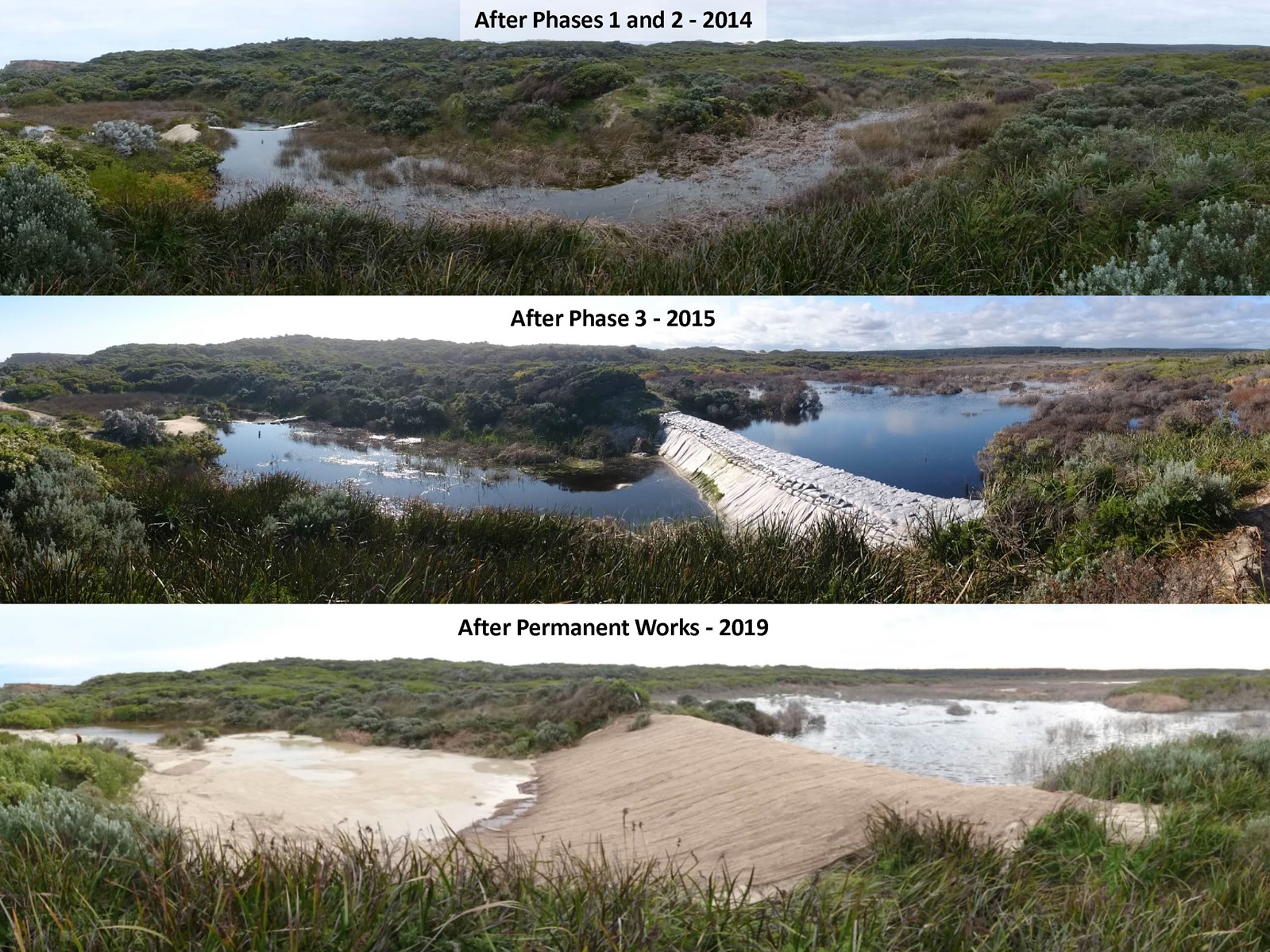Still out and about … Mark talking wetlands in Winton, and forgotten fauna in Newham
After taking a bit of much needed time to catch up on a number of things away from NGT, I’ll finally be properly back on deck in a couple of weeks, just in time to see our wetlands bursting into life this spring!
During my time off I have still had the chance to catch up with a few people and groups around the place, including a very enjoyable visit to the Newham Landcare Group in July, and then the Winton Wetlands Forum a couple of weeks ago.
The Newham visit was a chance to talk about a subject close to my heart – our ‘forgotten’ mainland fauna. I was very impressed by how everyone responded to my deliberately ‘provoking’ talk, as I set about challenging conventional thinking and common assumptions, by introducing the concept of ‘shifting baselines’ and exploring the complexity of foodwebs, cascading ecological effects and the often underestimated role of, and need for, predation in our ecosystems.
To summarise my main point, I put it to the group that we need to start fully thinking through how our ecosystems on this part of the mainland have been fundamentally altered by the extinction (e.g. quolls) or deliberate exclusion (e.g. dingo) of our native predators along with the concurrent arrival of introduced predators (e.g. foxes and cats). While the introduced predators have now got us completely distracted and typically take the majority of current management focus, our missing native predators and the role they should be playing has simply been either ignored or forgotten – with, as we discussed, sometimes unintended negative consequences. So, perhaps it is time to pay a little more attention to what we could now be trying to do about sustainably addressing this imbalance.
If you would like to learn more about our forgotten fauna, then these previous NGT articles may be of interest.
Then in the days after my visit to Newham, I was very grateful and excited to receive an old newspaper article from one of the audience members, Helen Kalajdzic, who recalled a Tiger Cat (aka Spot-tailed Quoll) being shot at Mount Macedon in 1974, as well as her account of another sighting from the 1990s. Although the species avoided the rapid, precipitous decline to extinction of its close relative the Native Cat (aka Eastern Quoll), which occurred after foxes arrived, the Tiger Cat / Spot-tailed Quoll, which was always apparently rare in this part of the mainland, is now extinct from much of its former range in Victoria and SA. Rare occasional sightings like this however still give us a glimmer of hope!
By the way, here is the article about the sighting from 1974 …

Tiger Cat at Mount Macedon in 1974. Copy of article courtesy of Helen Kalajdzic, Stanley Park Committee of Management.
My subsequent visit to the Winton Wetlands (near Benalla) this year was just as enjoyable as last year’s forum, with another packed audience in attendance. In 2019 the theme was community involvement in wetlands; so in my presentation on Day 2, I took the opportunity to explain just how important community volunteer involvement has been to the success of NGT’s wetland restoration trials (and NGT in general!) over the past eight years.
From top, L-R, these images are from (click the links to learn more):
- Gooseneck Swamp 2013
- Brady Swamp 2014
- Long Swamp 2014
- Walker Swamp 2014
- Mt Burr Swamp 2016
- Long Swamp 2015
- Glenshera Swamp 2017
Many of these projects only commenced because of ongoing community concern about the impact of artificial drains on the wetlands they care so much about. Then, after NGT was invited to look into the feasibility of fixing them and negotiating a way forward (see here for a short paper that explores how), volunteers from these communities then came out and helped us build the trial structures you can see above, to allow us to test the potential solution!
And now only a short time later, of the examples above, four sites (Gooseneck Swamp in 2014-15, Brady Swamp in 2015, Long Swamp [see below] in 2019 and Walker Swamp in 2019) have been permanently restored as a result of the success of the trials, using simple, relatively inexpensive earthworks and a ‘set and forget’ design philosophy; rather than more expensive concrete structures that require ongoing management, operation and maintenance.
At Walker Swamp, we even decided to use community volunteer help to set up the permanent spillway, while at Long Swamp the sand dune that was breached over 80 years ago (in the 1930s) at Nobles Rocks has recently been recreated.
A quick peek at the end result is below, but further news on that story will be on its way soon from NGT’s Jonathan Tuck who oversaw implementation of the final phase of earthworks – so keep checking in with the monthly NGT newsletter to learn more …




